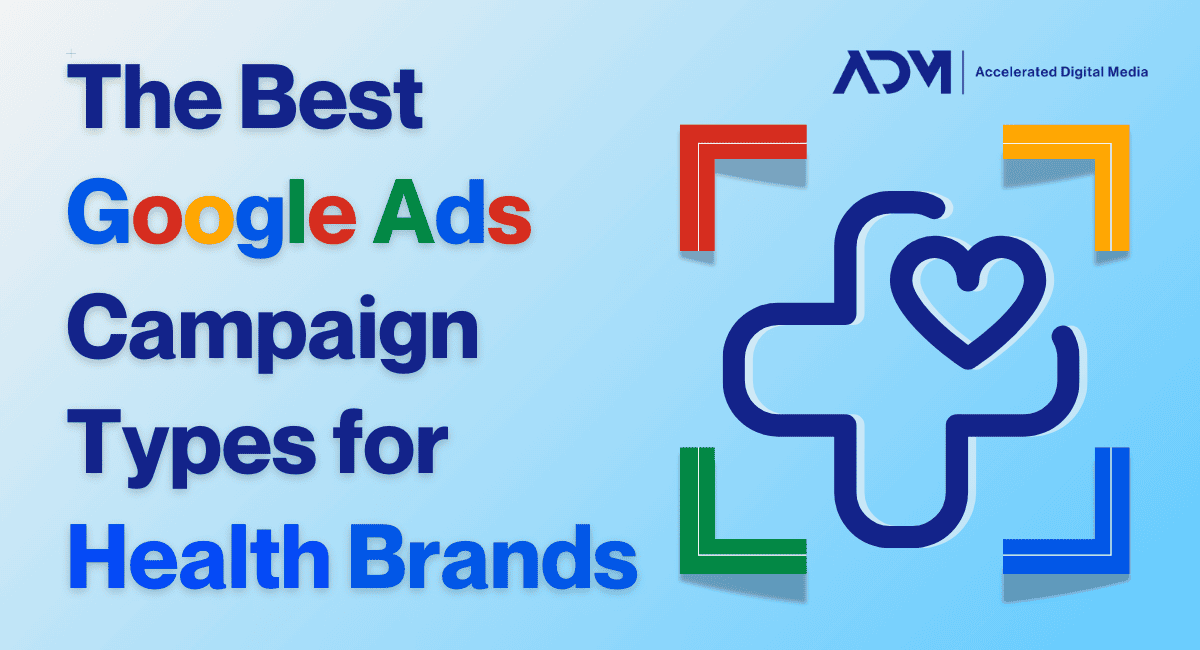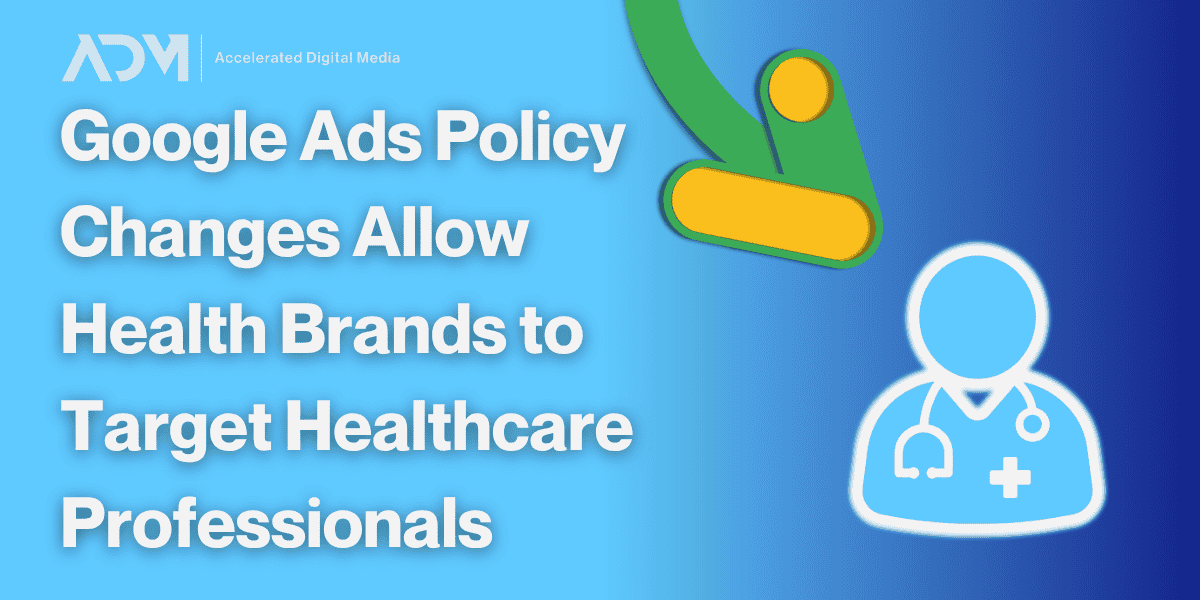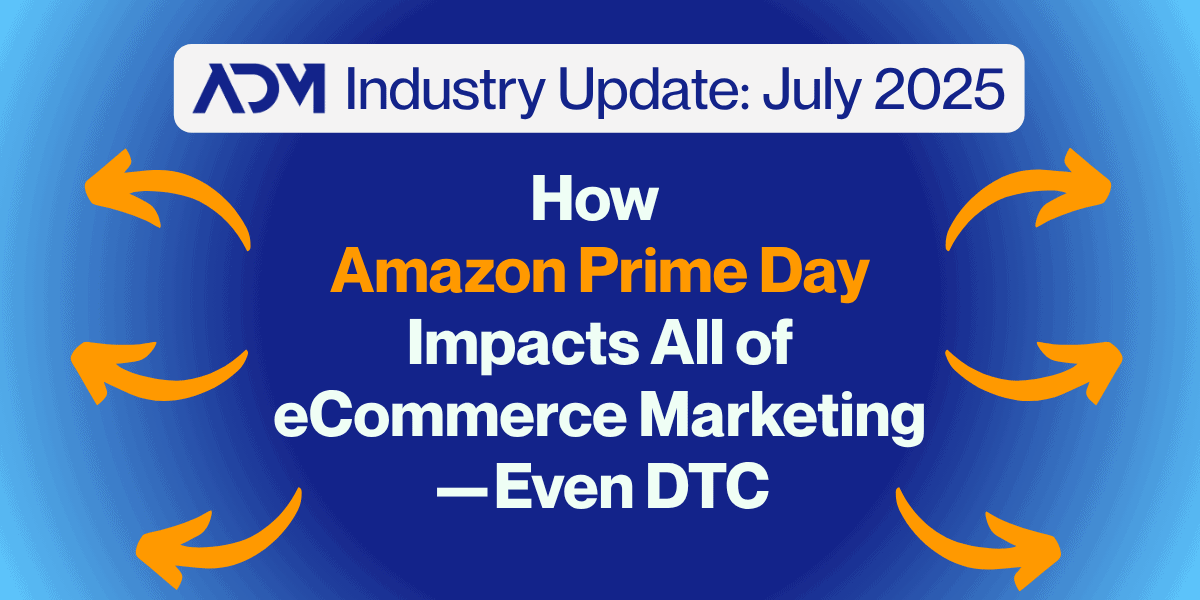Healthcare digital marketing is complex for so many reasons. Competition is fierce; patients don’t operate like typical consumers; and new and existing privacy restrictions limit the technical capabilities health advertisers can deploy. Because of all this, the intent-driven nature search engine marketing (SEM) makes it an excellent channel for connecting with patients accurately and compliantly.
Achieving scalable growth in such a regulated and complex industry, however, requires a nuanced approach. From branded and non-branded search strategies to leveraging innovative campaign types like Performance Max and exploring alternative platforms, we’ll lay out the most important Google Ads (and other) campaign types health brands can use to fuel their growth.
Table of Contents:
- Holding Your Lane: Branded Search
- Why branded search campaigns are essential
- Preventing competitor poaching and capturing high-intent users
- Capturing New High-Intent Traffic: Non-Branded Search
- Conquesting strategies
- Population-specific and condition-specific campaigns
- Expanding Your Reach: Performance Max
- Applications beyond Shopping ads for healthcare brands
- Best practices for creative testing and campaign setup
- Deploying Shopping Ads for Health Products
- Maximizing performance with Google Merchant Center feeds
- When to use Standard Shopping campaigns
- Campaign Limitations and Compliance Considerations
- Navigating restrictions in audience targeting and placements
- Thinking Outside Google Ads for Health SEM
- The untapped potential of Microsoft Ads (Bing)
Holding Your Lane: Branded Search
Many health brands tend to overlook the importance of branded search campaigns, with many assuming that bidding on their own company or product names is a “waste” and that organic search should handle it. But in health and wellness verticals, competition is often extremely fierce. Brand search campaigns play an essential role in capturing high-intent customers and safeguarding your brand from competitors seeking to divert these valuable users.
Capturing High-Intent Users: Branded search campaigns target users already interested in your brand or service, typically in the final stages before converting into patients. These users often search for long-tail terms that include concepts like “reviews,” “hours,” or what insurances a health brand accepts. Capturing these high-intent users through brand search campaigns ensures they land on your website, thereby increasing the likelihood of conversion, which plays into the next point…
Prevent Competitor Poaching: Unaddressed branded search queries provide an open opportunity for competitors to jump in front of your organic listings and capture users searching for your brand—even with high intent. By running brand search campaigns, you minimize the risk of losing potential customers to competitors who might take advantage of your missing presence on search engine results page (SERP).
Stay Atop the SERP: Even if you dominate organic results for your branded terms, paid ads will always appear above them. If you want to be the very first thing a user sees when searching for you, brand search campaigns will put you there. A strong presence in search results also signals credibility and trustworthiness to potential customers, as they associate high SERP rankings with well-established and reliable brands.
Capturing New High-Intent Traffic: Non-Branded Search
Non-branded search helps showcase your brand or product to users who are in various stages of research. From high-intent users ready to purchase to lower-intent users who want to learn more about a product, non-branded search can help inform users why your brand is the best choice. Non-brand search helps accounts scale and capture additional conversions. Along with launching keywords in the core areas listed below, landing pages that build trust with potential customers and align with intent are keys to success in this tactic.
Conquesting: Bidding on other brands that offer a similar service can be a successful approach as these users are high-intent and often ready to make a purchase. Highlight key benefits of your brand such as large price differences, service offerings, insurance/HSA-acceptance, etc to help your brand stand out as a better alternative to the brand a user was searching for.
Population-specific: Launch campaigns that are unique to different audiences. If a health brand offers “teen” vs “couples” vs “individual” services, it is beneficial to have unique campaigns or at least ad groups. This will ensure that you can customize ad copy and a landing page to these unique intents and align with what a potential customer is looking for. Depending on the service, purchase behavior may also differ between populations so unique campaigns and strategies to capture this traffic can be beneficial.
Condition-specific: Similar to populations, it can also be beneficial to have campaigns that are specific to conditions that a customer is looking to solve. Again, the key here is to ensure you have landing pages that highlight the unique conditions (anxiety, depression, OCD, ADHD, etc) while still driving customers to convert. If a landing page only focuses on converting without being specific to the condition, or is specific to the condition but is not conversion-focused (blog, lead gen, etc), the campaign will not be as likely to have an efficient CVR.
Expanding Your Reach: Performance Max
Performance Max is one of Google Ads’ most compelling campaign offerings because it can serve across Shopping, Search, Display, and Video placements (among others). Because of its impressive proficiency in Shopping, it’s often seen as primarily an eCommerce campaign type. But in select cases, it can be useful for health brands as well, even if they don’t sell a physical product of any type.
Even without Shopping ads, Performance Max works as an AI-powered Swiss Army knife of campaign, reaching users across multiple engaging formats. These campaigns can start with one or two asset groups and can be expanded depending on how many categories of products are available. While health brands may struggle to run efficient Display or Video campaigns, Performance Max’s placements are informed by Search insights as well—allowing it to deliver your best-performing content to audiences most-likely to respond to it.
The big benefit ADM has found in running Performance Max for healthcare has been efficiency. Through creative and landing page testing, we’ve found success using it to supplement non-brand search campaigns. The search terms it generates provide insight into what categories might be worth expanding within your Search campaigns.
To maximize the effectiveness of Performance Max campaigns without a Shopping feed:
- Use all available copy opportunities, including 15 headlines, 5 long headlines, 1 short description, and 4 long descriptions.
- Input relevant search themes to guide campaign focus.
- Refresh video and image assets regularly to ensure the campaign evolves with audience preferences.
As new creative elements are added, Performance Max tests placements across Search, Display, and Video. While Search often remains the primary placement, Display placements can become unexpectedly efficient. For one of our healthcare clients, Display spend share grew over time and continued to deliver surprisingly strong results thanks to the algorithms learnings about placements and targeting.
Deploying Shopping Ads for Health Products
For healthcare brands that do sell physical products, such as medications, ADM uses many of the above techniques but adapts its approach to maximize campaign effectiveness. If you’re linking Performance Max campaigns to Google Merchant Center feeds to enable Shopping placements, the quality of those feeds is highly important. Accurate and reliable pricing and claims are critical, including clear disclosures of consultation fees and out-of-pocket costs.
There are unique situations where Standard shopping campaigns may make more sense for a brand. ADM is flexible in regard to testing to ensure that appropriate campaigns are utilized based on each client’s unique goals and products. Given that many users search for specific products rather than brand names, mastering Shopping strategies—whether through Performance Max or Standard Shopping—is essential for capturing search traffic effectively.
Campaign Limitations and Compliance Considerations
Healthcare marketing faces unique challenges due to strict compliance regulations. For instance, Google’s personalized advertising policy restricts the use of first-party audiences, including remarketing and customer match. This limitation affects the targeting capabilities of Display, Demand Gen, and Performance Max campaigns. Specifically:
- Performance Max: Eligible to serve in Search, Shopping, Display, and YouTube but not in Discover or Gmail.
- Demand Gen: Limited to YouTube placements.
Despite these restrictions, healthcare campaigns can still focus on conversion (CPA) or revenue (ROAS) goals if set up with appropriate, compliant conversion tracking.
Thinking Outside Google Ads: for Health SEM
While “SEM” almost always refers to Google Ads tactics, it’s important to remember that Google isn’t the only search engine where you can market. While often overlooked, Microsoft’s Bing can offer lower competition and cost-per-click (CPC) rates compared to Google. ADM often recommends testing Microsoft Ads to unlock additional value.
In one example, a Bing branded search campaign proved both affordable and effective for one of our health clients—and when expanded to include high-intent Non-Brand campaigns, it produced hundreds of additional conversions at a 40% lower cost per acquisition than Google campaigns. To improve your marketing efficiency, it’s always worth exploring other platforms where competition isn’t as fierce.
At the end of the day, advertising in healthcare is hard: You need creativity, focus, willingness to test, and a firm understanding of the legal and platform limitations. If you’re looking for an experienced health marketing agency to help point you in the right directions, consider reaching out to the ADM team today. We’ll be glad to offer our expertise and discuss how we can help.




